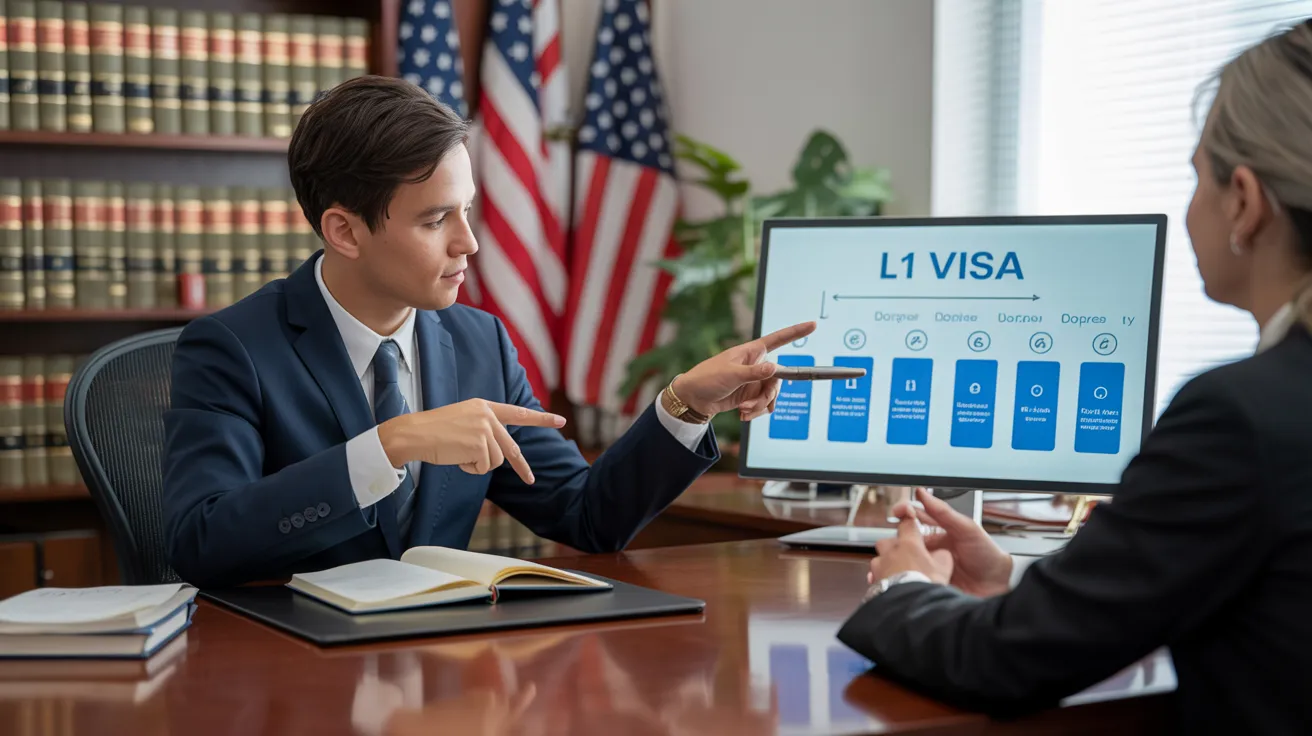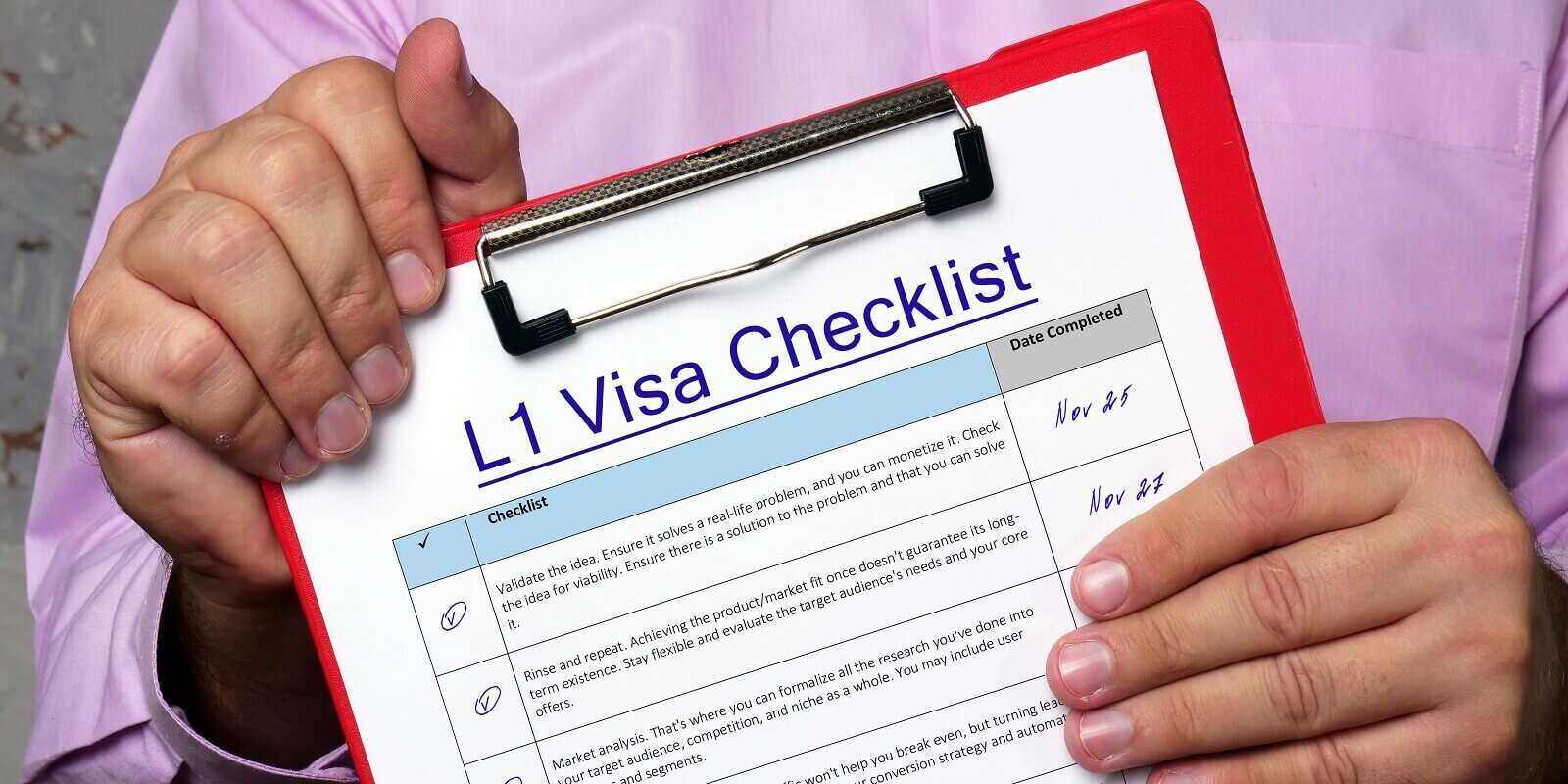L1 Visa Timeline
Every little thing You Need to Find Out About the L1 Visa: Advantages, Demands, and Much more
The L1 Visa serves as a critical device for international companies seeking to transfer staff members to the USA, helping with both operational efficiency and the transfer of specialized understanding. With distinctive classifications for execs and specialized experts, this visa provides many advantages, consisting of prospective pathways to permanent residency. However, recognizing the eligibility demands and application process is important for a successful shift. As we take a look at the intricacies of the L1 Visa, it ends up being clear that maneuvering its complexities is extremely important for companies intending to take advantage of worldwide ability efficiently. What obstacles might you encounter along the road?
Introduction of the L1 Visa

Kinds Of L1 Visas

Numerous kinds of L1 visas deal with the diverse requirements of international companies looking to transfer workers to the USA. The 2 key categories of L1 visas are L1A and L1B, each developed for certain duties and responsibilities within an organization. L1 Visa.The L1A visa is planned for supervisors and executives. This classification enables business to move individuals that hold managerial or executive placements, allowing them to supervise operations in the united state. This visa is valid for a preliminary period of up to three years, with the possibility of expansions for a total of up to seven years. The L1A visa is particularly valuable for business seeking to develop a solid management visibility in the united state market.On the other hand, the L1B visa is assigned for workers with specialized understanding. This includes individuals who have innovative expertise in specific areas, such as exclusive technologies or one-of-a-kind procedures within the company. The L1B visa is likewise legitimate for a preliminary three-year duration, with extensions available for up to 5 years. This visa classification is excellent for business that require workers with specialized skills to boost their operations and maintain an affordable edge in the U.S.Both L1A and L1B visas permit twin intent, suggesting that visa owners can get irreversible residency while on the visa. Understanding the distinctions between these two categories is crucial for businesses planning to browse the complexities of staff member transfers to the United States effectively
Qualification Requirements
To get an L1 visa, both the employer and the staff member need to satisfy specific eligibility standards established by U.S. immigration authorities. The L1 visa is designed for intra-company transferees, allowing international companies to move staff members to their U.S. offices.First, the company needs to be a qualifying company, which suggests it must have a parent company, branch, subsidiary, or associate that is working both in the united state and in the international nation. This partnership is important for showing that the employee is being moved within the same company framework. The company needs to additionally have actually been doing organization for at the very least one year in both locations.Second, the employee should have been utilized by the international firm for at the very least one continual year within the three years coming before the application. This work needs to remain in a supervisory, executive, or specialized understanding capability. For L1A visas, which deal with managers and execs, the staff member must show that they will certainly remain to operate in a comparable capacity in the U.S. For L1B visas, intended for workers with specialized knowledge, the specific must possess distinct know-how that adds substantially to the company's operations.
Application Process
Navigating the application procedure for an L1 visa includes a number of important steps that should be finished precisely to ensure a successful outcome. The very first step is to determine the proper group of the L1 visa: L1A for managers and execs, or L1B for staff members with specialized understanding. This difference is substantial, as it impacts the paperwork required.Once the category is identified, the U.S. employer should file Kind I-129, Petition for a Nonimmigrant Employee. This form should consist of comprehensive info regarding the business, the employee's role, and the nature of the job to be performed in the united state Accompanying documentation commonly consists of evidence of the connection between the united state and international entities, evidence of the worker's certifications, and info concerning the job offer.After entry, the U.S. Citizenship and Migration Solutions (USCIS) will review the petition. If accepted, the staff member will certainly be notified, and they can then use for the visa at an U.S. consular office or embassy in their home country. This involves finishing Kind DS-160, the Online Nonimmigrant Visa, and arranging an interview.During the interview, the candidate should provide different papers, consisting of the authorized Kind I-129, proof of work, and any type of additional sustaining proof. Following the meeting, if the visa is granted, the worker will receive a visa stamp in their copyright, allowing them to go into the united state to work for the funding employer. Proper preparation and comprehensive documentation are key to steering this procedure efficiently.
Benefits of the L1 Visa
One of the notable benefits of the L1 visa is its capability to help with the transfer of essential workers from global offices to the United States. This visa is especially helpful for multinational companies looking for to keep consistency in operations and management throughout borders. By permitting executives, supervisors, and specialized employees to operate in the U.S., organizations can assure that their most important ability is readily available to drive service objectives.Another considerable benefit of the L1 visa is its fairly uncomplicated application procedure compared to various other work visas. Organizations can petition for the L1 visa without the requirement for a labor accreditation, which streamlines the employment of international workers. The visa can be approved for a preliminary period of up to three years, with the opportunity of extensions, assisting in long-lasting assignments.The L1 visa additionally offers a path to long-term residency. Workers on L1A visas (for managers and execs) can look for a Permit after one year, quickening their modification to permanent status. This feature is an appealing motivation for talented individuals seeking security in the U.S. workforce.Additionally, L1 visa owners can bring their immediate member of the family to the U.S. under L2 condition, permitting partners and youngsters to reside and research in the nation, enhancing the general charm of this visa category. On the whole, the L1 visa offers as a necessary tool for international organizations, promoting cross-border collaboration and ability mobility.
Typical Difficulties
While the L1 visa provides many benefits for international business and their staff members, it is not without its difficulties. One noteworthy hurdle is the rigorous documentation and qualification needs enforced by the U.S. Citizenship and Migration Solutions (USCIS) Companies should offer detailed evidence of the foreign staff member's credentials, the nature of the company, and the qualifying connection in between the U.S. and foreign entities. This process can be time-consuming and might require lawful proficiency to browse successfully.Another obstacle is the capacity for scrutiny throughout the petition procedure. USCIS police officers may examine the authenticity of the organization operations or the staff member's role within the organization. This scrutiny can result in hold-ups and even rejections of the visa, which can considerably impact the firm's functional strategies and the staff member's career trajectory.Furthermore, the L1 visa is connected to the funding employer, which suggests that work changes can make complex the visa status. If an L1 visa owner wants to switch companies, they should frequently go after a different visa classification, which can add intricacy to their migration journey.Lastly, preserving conformity with L1 visa guidelines is crucial. Employers should guarantee that their employee's duty straightens with the first application which the business continues to satisfy the qualification needs. Failing to do so can cause revocation of the visa, affecting both the employee and the organization. These challenges require extensive prep work and ongoing monitoring to guarantee a successful L1 visa experience.
Tips for Success
To effectively navigate the L1 visa procedure, precise preparation is crucial. Begin by thoroughly recognizing the particular needs for the L1 visa category you are getting, whether L1A for managers and execs or L1B for staff members with specialized knowledge. Collect all essential paperwork early in the process, consisting of evidence of your work background, organizational framework, and the nature of the organization operations.Engage lawful advice experienced in immigration law to lead you via the ins and outs of the application. A lawyer can help assure that your application is full, precise, and engaging. They can additionally assist in planning for prospective demands for evidence (RFEs) by proactively addressing areas that might raise questions.Additionally, preserve clear interaction with your company, who have to provide vital assistance for your application. L1 Visa. Verify that they understand their duties, consisting of submitting the essential petitions and offering documents that corroborates your duty in the organization.Prepare for the visa interview by exercising response to typical questions regarding your expert background and the nature of your work. Showing self-confidence and clearness can considerably affect the outcome of your application
Regularly Asked Questions
Can Family Members Members Accompany L1 Visa Holders?
Yes, member of the family can accompany L1 visa holders. Partners and unmarried youngsters under 21 years of ages are qualified for L2 visas, which enable them to live and research in the USA during the L1 holder's stay.
How Long Can L1 Visa Holders Stay in the U.S.?
L1 visa holders can originally stay in the U.S. for as much as 3 years (L1 Visa Requirements). This period might be expanded, enabling an optimum keep of 7 years for L1A visa owners and five years for L1B visa holders
Is the L1 Visa a Double Intent Visa?

Can L1 Visa Holders Look For an Eco-friendly Card?
Yes, L1 visa holders can apply for a copyright - L1 Visa. The L1 visa supports twin intent, allowing owners to seek permanent residency while preserving their non-immigrant condition, promoting a smoother transition to a copyright
What Happens if an L1 Visa Is Denied?
If an L1 visa is rejected, the applicant might get a notice detailing the factors for denial. L1 Visa. They can appeal the choice, reapply, or discover alternative visa choices depending upon read more their circumstances and certifications
Verdict
In recap, the L1 Visa works as an essential tool for multinational companies seeking to move workers to the United States. Recognizing the differences in between L1A and L1B categories, in addition to the eligibility requirements and application processes, is crucial for effective navigating of this non-immigrant category. The advantages supplied, consisting of structured applications and pathways to irreversible residency, even more enhance its appeal. Attending to common challenges efficiently can lead to a more positive result in the visa process.